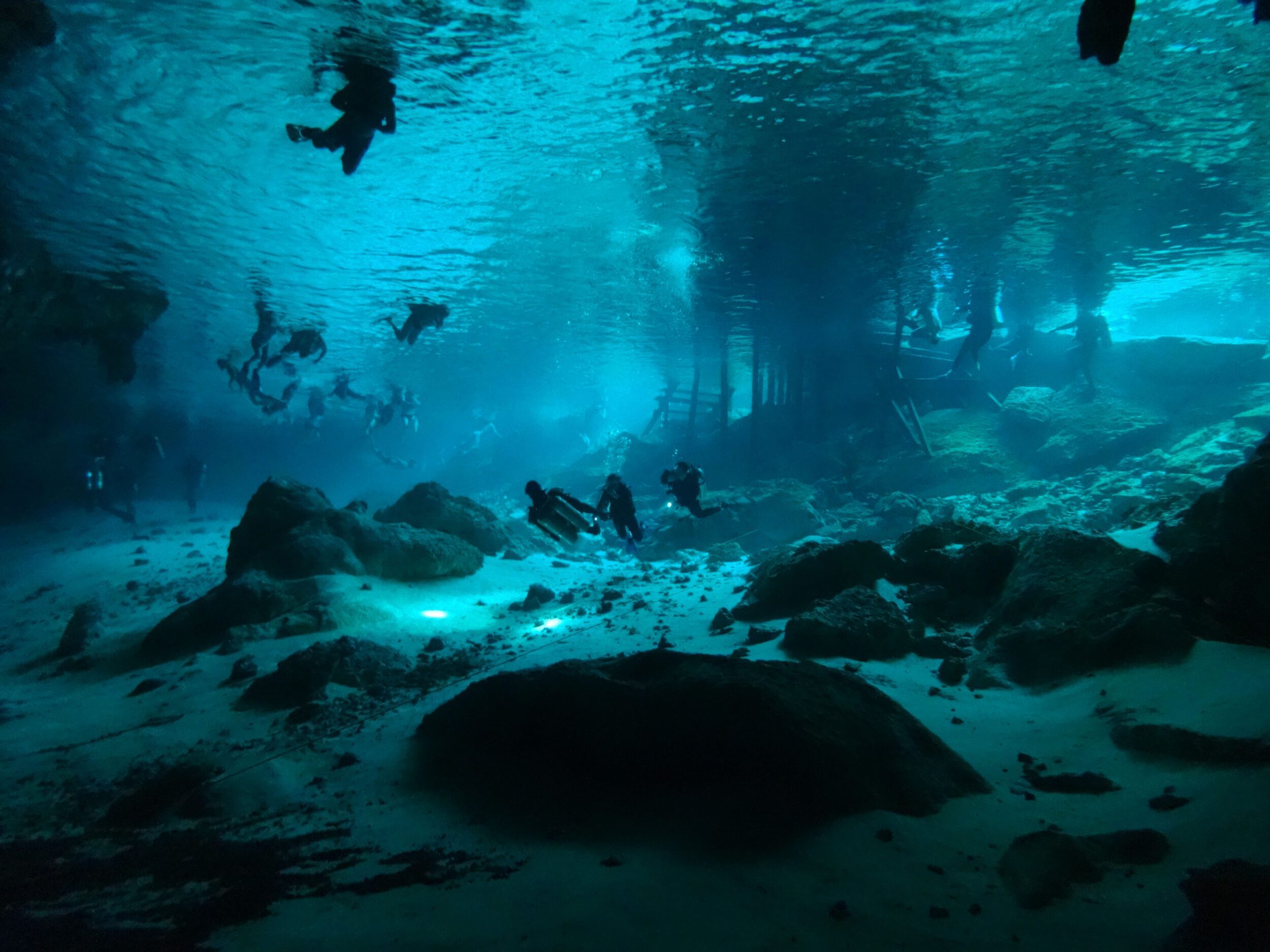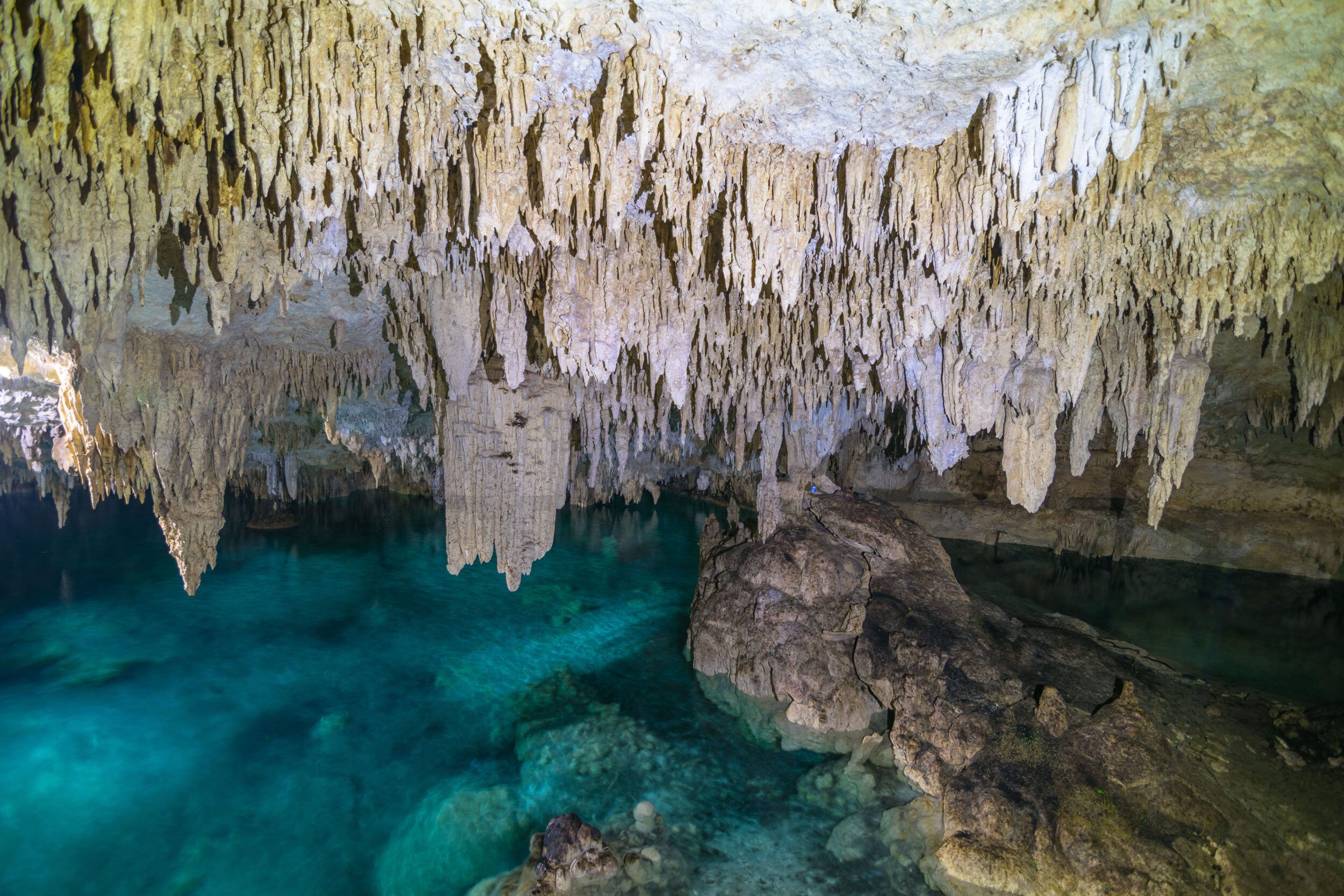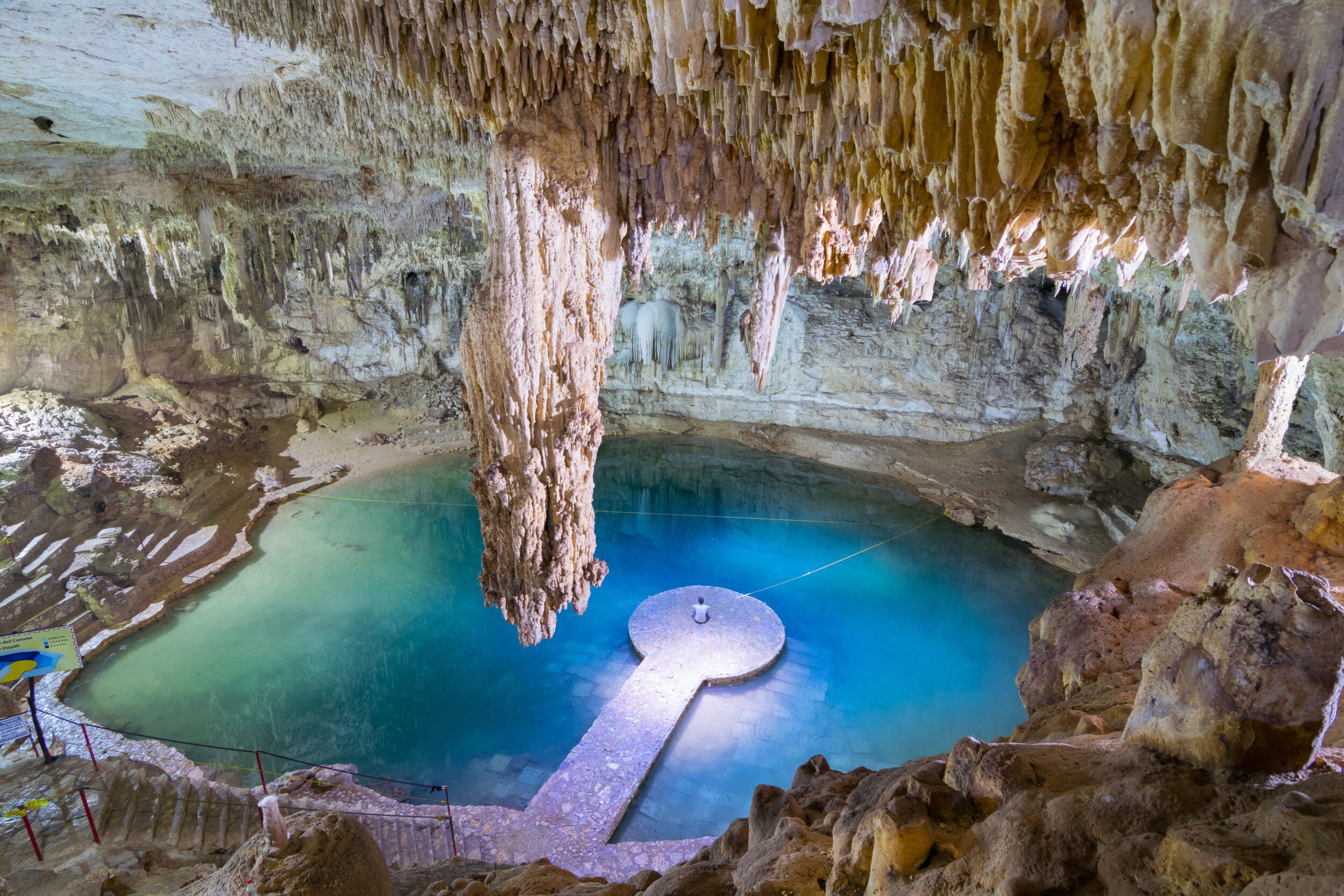Explore Tomorrow's World From Your Inbox
Get the latest science, technology, and sustainability content delivered to your inbox.
I understand that by providing my email address, I agree to receive emails from Tomorrow's World Today. I understand that I may opt out of receiving such communications at any time.
Two-hundred and sixteen miles…that’s just a bit under the distance between Philadelphia and Virginia Beach, nearly the length of 3,802 football fields, or the length of the longest underwater cave in the world.

Discovered near the resort town of Tulum, Mexico, two connected underwater caves (named Sac Actun and Dos Ojos) have not just broken a record in mileage, but also will provide additional information about the Mayans, pre-Hispanic people who lived in the Yucatan Peninsula. The pair of caves dethrone Ox Bel Ha as world’s longest underwater cave, which measures 168 miles and is also located in Mexico.
Exploration director Robert Schmittner has been exploring Sac Actun for 14 years. This discovery is just the latest in the decades-long work of exploring the vast number of underwater caves located in Quintana Roo, Mexico, which also houses the aforementioned Ox Bel Ha. In a statement, Schmittner said that it’s now “everyone’s job to protect [Sac Actun].”
To call Sac Actun an “underwater cave” is actually a bit of a misnomer, however. They were flooded over time via sinkholes or cenotes (underground natural wells). It’s possible that Sac Actun is connected to “the mother of all cenotes,” an 11-mile cenote system just north of the main cave structure. While the two are not connected at this time, explorers and scientists alike are optimistic- they once thought the same of Sac Actun and Dos Ojos.
The cenotes are notable not only for their size, but for their significance as well. Mayan culture built their cities using the network of caves and sinkholes in the area, making underwater caves like Sac Actun and Ox Bel Ha a goldmine for fossils and artifacts. Some cenotes even held a religious status to the Mayans, possibly for their importance in the creation of the caves.

As for the Mayan artifacts, Guillermo de Anda, director of the Gran Acuifero Maya, says it’s “the most important submerged archeological site in the world. [The caves have] documented evidence of the first settlers in America, as well as extinct fauna and, of course, Mayan culture.” This won’t be the first time the system is an archeological and paleontological hotspot- in 2008, a section of the cave was found to have housed a human skull and the remains of a mastodon.
De Anda also says that “more than 100 archeological elements” have been recorded, ranging from ceramics to graves. Descendants of the Mayan people still populate the area around Sac Actun, and these remains can help path their genealogy and find their ancestors. Given the popularity of DNA kits like AncestryDNA and 23andMe, having new records may link even more people to Mayan roots they previously didn’t know they have.

Like any great discovery though, Sac Actun and Dos Ojos are already being flooded with tourists. Given their proximity to Tulum, vacationers are already nearby and eager to enjoy Mexico’s natural beauty. Fortunately, most of the tours being offered respect both the ecosystem and culture of the area, and additional progress on uncovering artifacts occurs further into the cave.
While the complete catalogue of what Sac Actun and Dos Ojos hold is not available yet (as of this writing), it’s already obvious that the scientific community will have many breakthroughs as a result of the discovery. Archeologists, geologists, and even those just curious about the cultures that came before will surely be satisfied with the artifacts and all the associated information. If all else fails, we now know more about the planet we inhabit and what secrets it holds.
Anybody up for some snorkeling?







